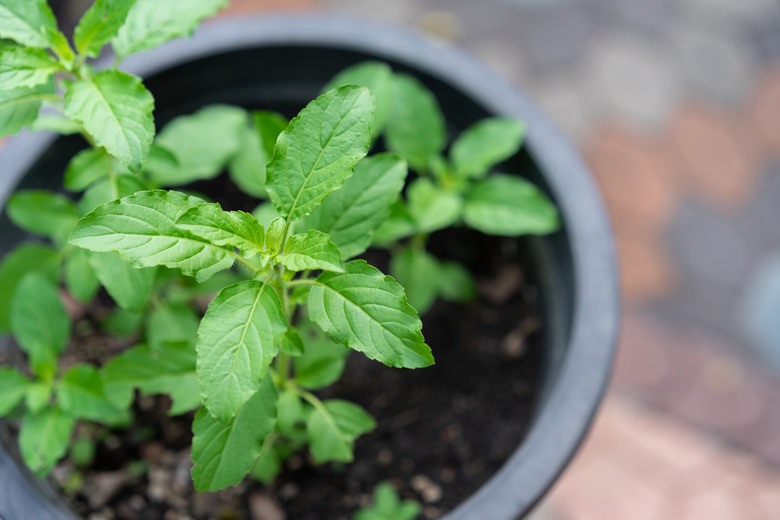What Is A Tulsi Plant? Here's Everything You Need To Know
We may receive a commission on purchases made from links.
It's understandable why people have developed simple common names for the plant known botanically as Ocimum sanctum or Ocimum tenuiflorum. Two of the most popular common names are tulsi and holy basil. In the Hindu religion, this plant, which is in the Lamiaceae (mint) family and closely related to regular basil (Ocimum basilicum), is reputed by some to be the reincarnation of the Hindu goddess Tulsi. It is also a fascinating plant in and of itself.
Meet the Tulsi Plant
Meet the Tulsi Plant
The tulsi plant is an aromatic, like many species of basil. Its fragrance is spicy and pungent, not entirely dissimilar to culinary basil. It grows as an upright bush to 3 feet tall with purple stems and green aromatic leaves. The leaves are oval and roughly toothed. In fact, the genus name Ocimum comes from the Greek word for aromatic herb.
Thought to have originated in north central India, tulsi grows in the wild throughout the east Asia tropics. Known for its fragrant leaves, it also produces tiny flowers in spring that are white, pale pink, or purple. These develop small, rust-colored fruits. The plant propagates itself by self-seeding.
Understand Tulsi's Uses
Understand Tulsi's Uses
The tulsi herb is sacred in Hindu regions. Some Hindus believe that the tulsi plant is the reincarnation of or at least sacred to the goddess Tulsi. Many believe that it is possible to raise the souls of dying persons to heaven by feeding them tulsi flower petals. Throughout history, tulsi plants have been planted in the gardens of Hindu houses and have been used medicinally as well as to cleanse the body.
Tulsi is also eaten as a vegetable. It can be consumed raw or cooked and is used in salads, as flavoring, or is made into tea. Tulsi seeds are also made into beverages.
Tulsi is a central herb in Ayurvedic medicine and is used to treat a variety of ailments, including fever, bacterial infections, inflammation, influenza, headaches, arthritis, and rheumatism. More mundanely, tulsi essential oil is used as insect repellent.
Grow the Tulsi Plant
Grow the Tulsi Plant
If you live in the warmest zones — that is, U.S. Department of Agriculture plant hardiness zones 10 through 12 — you can grow tulsi as part of a fragrance or herb garden. Site it in full sun in moist soil with excellent drainage. Though tolerant of soil types, tulsi will die quickly in waterlogged soils.
Sow tulsi seeds in spring after the last frost. Sprinkle the tiny seeds on the soil and cover them with a thin layer of soil. Water the plants regularly, but allow the soil to dry out between waterings.
